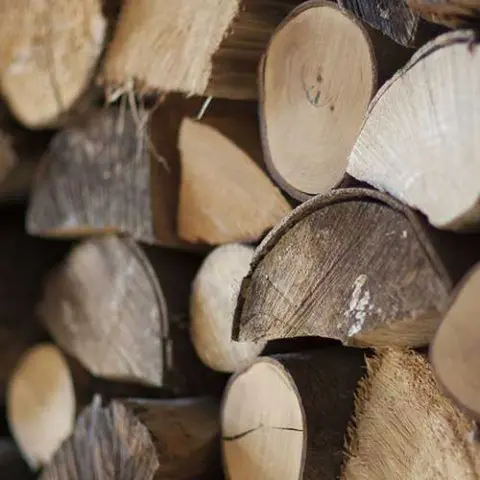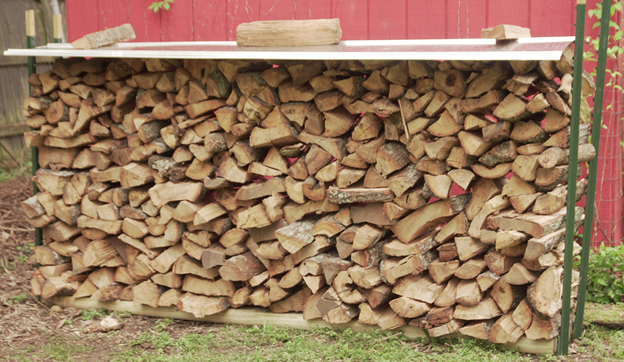Burning and Storing Fire Wood
July 23, 2021
Burning Dry Wood

Believe it or not now is the optimal time to begin gathering or purchasing your wood for next winter as it can take up to 6 months to 2 years for some wood to be dry enough to burn efficiently in your EPA certified wood stove. There’s really no calculator that can tell you exactly how long a specific type of wood takes to season, because there are so many variables at play. What you can do, no matter where you live, or the type of firewood you gather, or purchase, is to properly season it.
Seasoning Your Wood
If you want your firewood to dry as quick as possible, make sure to split the logs as soon as possible while leaving them outside. Since firewood dries from the ends, not from the bark, the more exposed the ends are the quicker drying time. Firewood should measure at lower than 20% moisture with a moisture meter. If you live in the Greater Portola area, please contact the Northern Sierra Air Quality Management District today at 530-832-0102 for a free moisture meter!
Storing Your Wood
Once you are ready to stack the firewood, make sure to do so on the sunny side of your property, as constant sunlight directed towards your wood stack will make it dry even better.
Also take into consideration proper ventilation – as you stack the firewood, make sure to leave openings in between to let the airflow pass through so that everything inside dries quicker. Having a large amount of airflow through the wood helps it dry more quickly. An open style woodshed design can assist with this airflow. When stacking your wood in any type of enclosure make sure all sides are open to the air to optimize drying. A roof over the stack can help keep the wood protected by the environment. You don’t want to enclose the wood on all sides by something like a tarp as it can inhibit air flow and drying of the wood.
You also want to avoid stacking the wood directly on the ground. When wood is stacked directly on the ground, the bottom layer can wick up ground moisture, is not subject to air flow and is more susceptible to mold and insects such as termites, which can destroy your firewood. There are numerous options to stacking your firewood directly on the ground; these include pressure treated 2 x 4’s or using old pallets as the base of your wood stack. If you have no option to stacking your wood directly on the ground, you can stack the first-row bark side down to inhibit some of the moisture wicking that can occur.
There are numerous types of woodsheds that can be constructed to further protect your firewood and to assist with proper ventilation and drying.

Constructed with four 6 feet green T posts that cost about $25, galvanized roofing at approximately $20 and the 2 (8 ft long landscape timber) at $10. Holds about ¼ cord of wood and has great flexibility on where you can place it.
Check out firewood stacking and storage options at the websites below:
The Northern Sierra Air Quality Management District, Portola field office, is looking for community involvement. We have numerous resources on air quality, clean wood burning practices, wildfire air quality data and much more.
If you live in the greater Portola area and already have or are getting an EPA certified woodstove contact us today for a FREE high quality woodshed! The Air District has two woodsheds remaining this season.
Contact us today at 530-832-0102, melissak@myairdistrict.com
